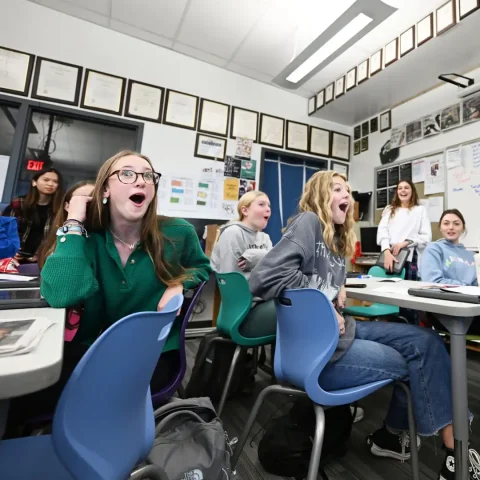Few high school journalists have a keen understanding of libel law, but not knowing may put your publication and reputation at risk. Do study up on libel, but you can also use these five tips to remember the main points of how to avoid libel:
1. Begin with ethics. Awareness of ethical principles can help curb libel. Advisers and editors need to be diligent, knowing that student journalists may sometimes use their news media for self-interests rather than community welfare. One malicious article containing false information that jeopardizes the good reputation of a teacher or classmate could bring a lawsuit.
The National Scholastic Press Association has a Code of Ethics available for student journalists. Each student should have a copy. Go to studentpress.org/nspa to get a copy.
2. Know libel law. Briefly, libel is any published communication — words, photos, pictures and symbols — that falsely harms a person’s reputation. Truth is the best defense in a libel case. If a statement is true, no legal basis for a successful libel claim exists.
3. Know the plaintiff’s responsibility. The plaintiff (the person suing) has the responsibility to prove all four of the following elements to win a libel suit:
- (1) Publication —Plaintiff must prove the defamatory statement was communicated to other people. If students read the statement on a computer screen in the yearbook/newspaper office, that could constitute publication.
- (2) Identification — Plaintiff must show that a sufficient number of people identified the plaintiff. Even if no name is used or if the subject’s identity is in other ways disguised, identification can still occur if enough people are able to recognize the plaintiff.
- (3) Harm (also called Defamation) — The plaintiff must prove the statement harmed his or her reputation. In cases of editorial cartoons, parody and satire, if an ordinary person reasonably would interpret the material was not meant to be taken seriously, it would be difficult for a plaintiff to win.
- (4) Fault — The plaintiff must prove negligence or malice: (a) Negligence — Failure to exercise ordinary care. A private person can show fault if they can prove that a member of the yearbook staff made a mistake — even an innocent one — that “reasonable” staff members should not have made. (b) Malice — A public person or public official who can show that the defendant knew his information was false and/or had reckless disregard for the truth can show fault.
Determining whether a plaintiff qualifies as a private person, public figure or public official is not always easy, especially when dealing with teachers, coaches, school administrators and others in a school community. But it makes a profound difference, because the classification determines whether the defendant will be held to the lowest fault standard (private person) or the highest (public official).
4. Implement safeguards. Develop procedures for spotting the red flags of possible libel. Accuracy is essential. Have more than one editor review stories, photos, captions, editorial cartoons and other content before publication. Verify information.
5. Review ethics and press law regularly. When diligence is relaxed, serious mistakes may occur. Keep a conscious awareness of the ethics and law of scholastic journalism by reviewing the ethical and legal issues of student work regularly.



